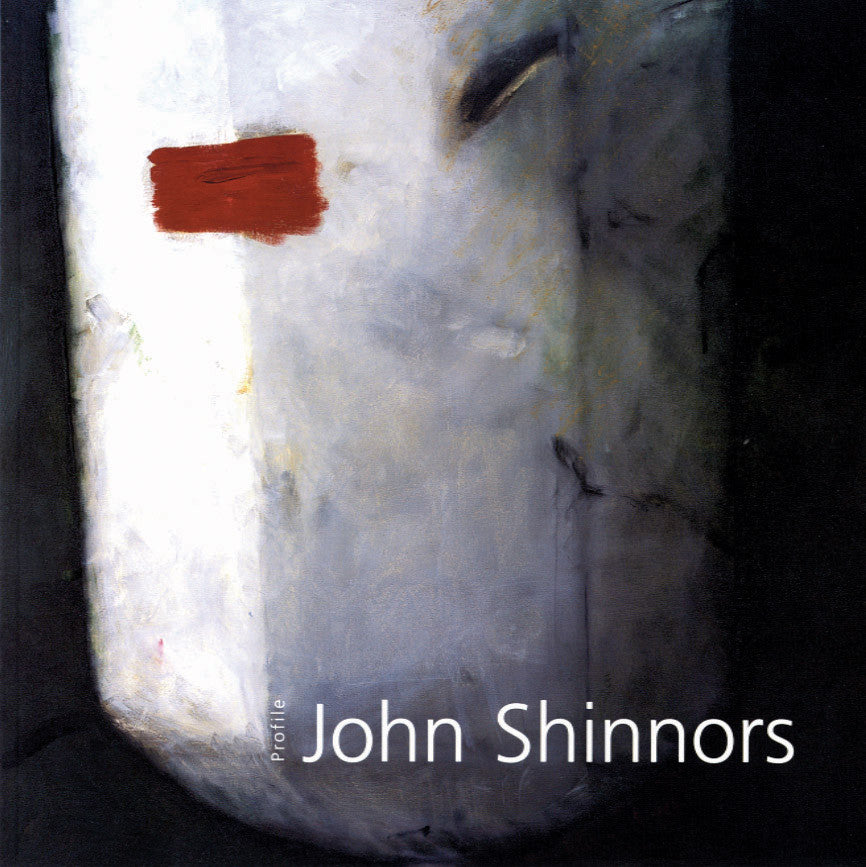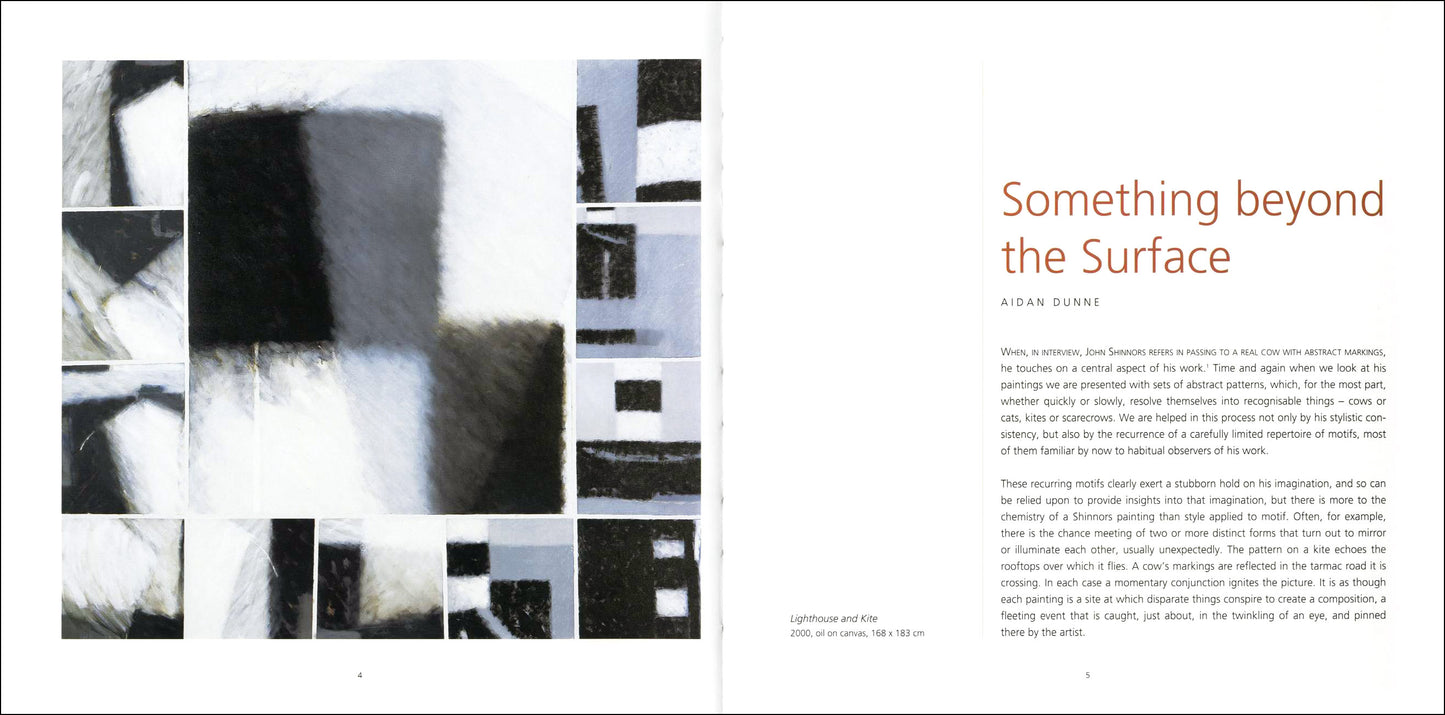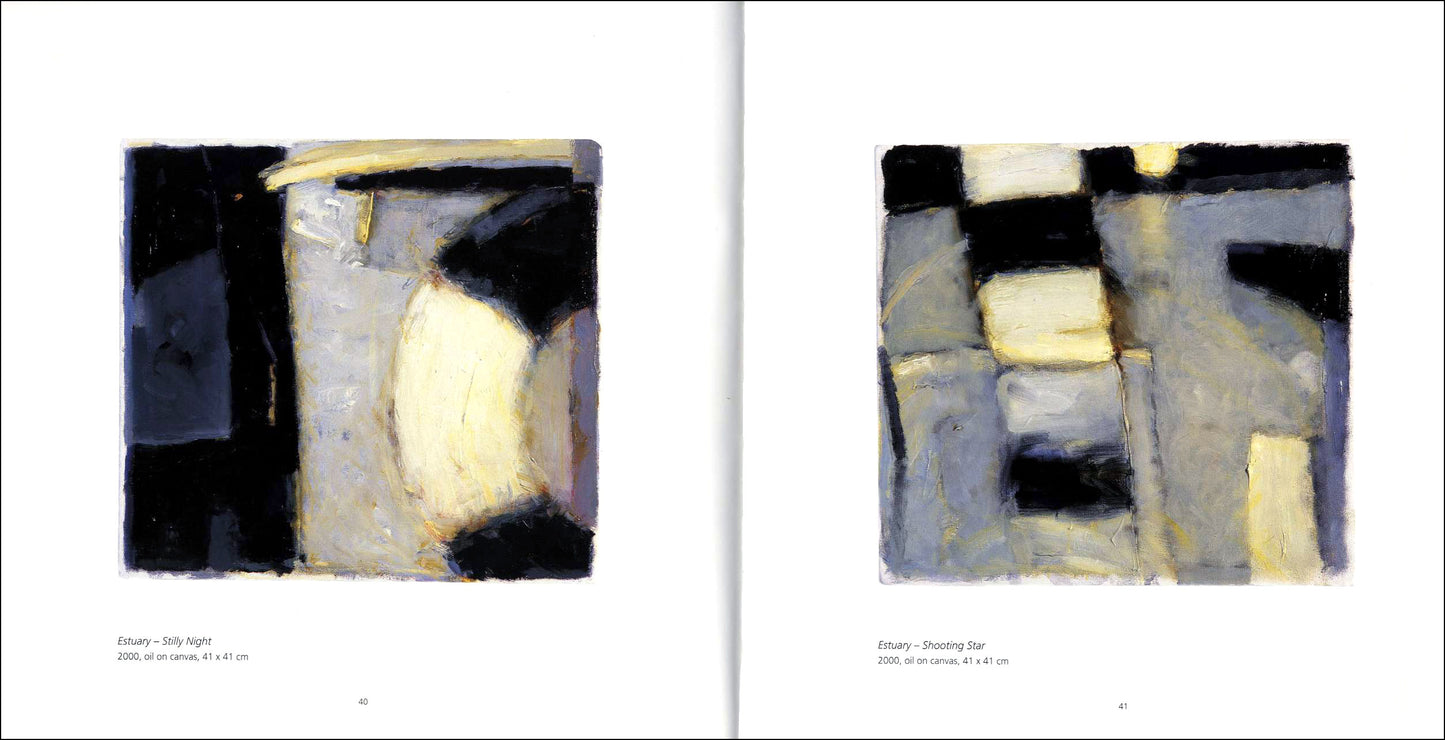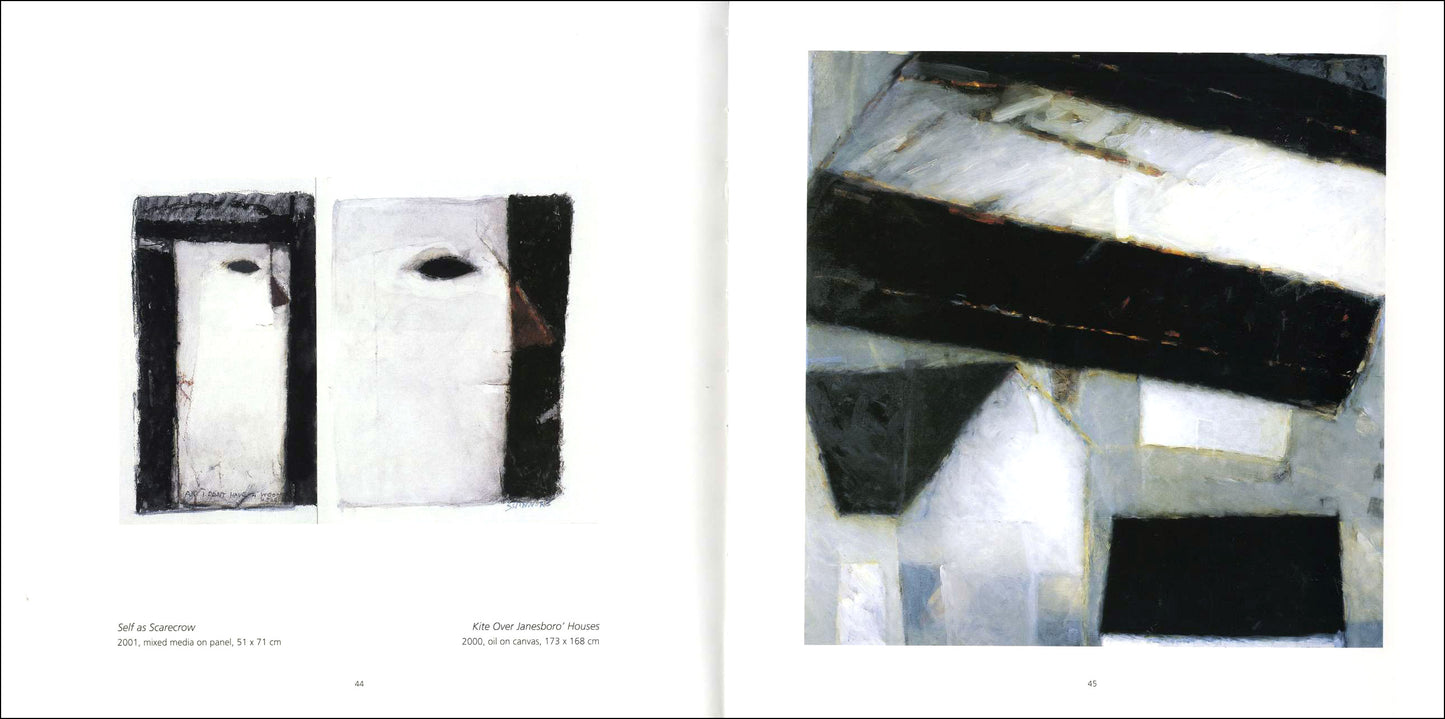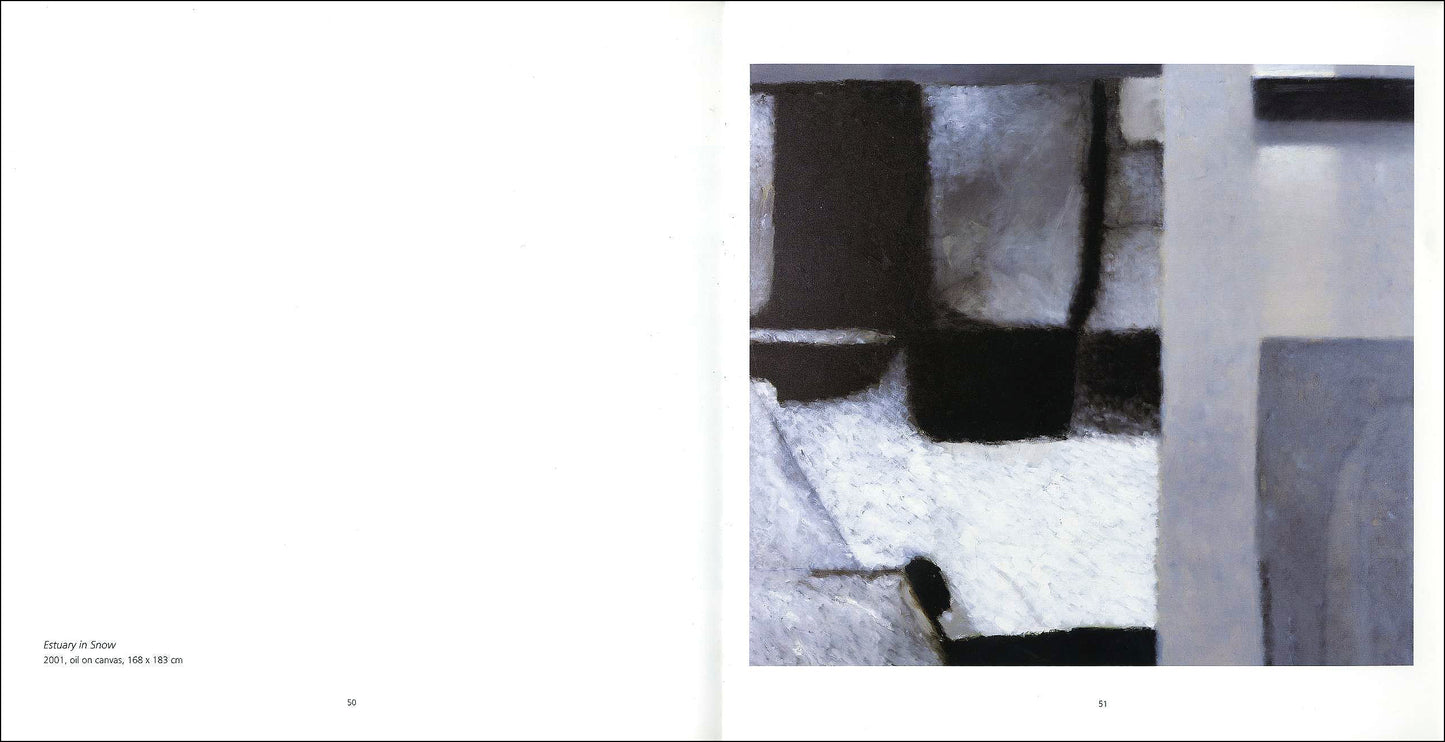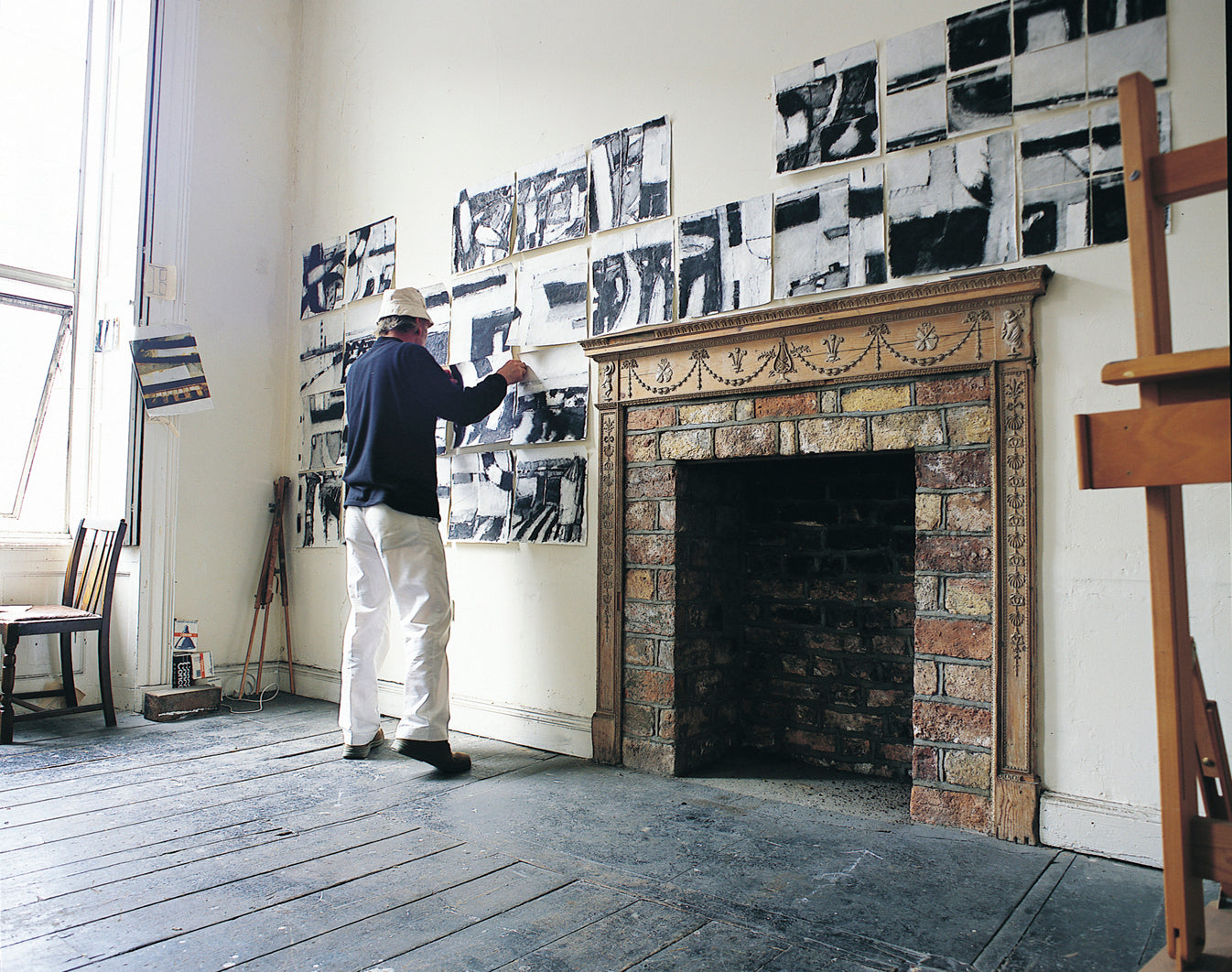Gandon Editions
Profile °18 – JOHN SHINNORS
Profile °18 – JOHN SHINNORS
Couldn't load pickup availability
Share
essay by Brian Fallon; intro and interview by Aidan Dunne
ISBN 978 0946846 788 60 pages (paperback) 22.5x2.5cm 51 illus
John Shinnors is, without doubt, in the first rank of Irish painters. This book follows the slow but constant development of Shinnor’s career, from the early evidence of his technical competence and his decisive shift from a surreal to an abstact style, to the origins and use of the motifs for which he is now so well known. Shinnors talks of growing up in Limerick and attending the art college there, of his interest in music and his time in London. He comments on his early work and that crucial shift in perspective which became the foundation of his abstract style. He talks about the motifs in his work, his use of colour, and the locations which have inspired him.
EXTRACTS
"When, in interview, John Shinnors refers in passing to a real cow with abstract markings, he touches on a central aspect of his work. Time and again when we look at his paintings we are presented with sets of abstract patterns, which, for the most part, whether quickly or slowly, resolve themselves into recognisable things – cows or cats, kites or scarecrows. We are helped in this process not only by his stylistic consistency, but also by the recurrence of a carefully limited repertoire of motifs, most of them familiar by now to habitual observers of his work.
These recurring motifs clearly exert a stubborn hold on his imagination, and so can be relied upon to provide insights into that imagination, but there is more to the chemistry of a Shinnors painting than style applied to motif. Often, for example, there is the chance meeting of two or more distinct forms that turn out to mirror or illuminate each other, usually unexpectedly. The pattern on a kite echoes the rooftops over which it flies. A cow’s markings are reflected in the tarmac road it is crossing. In each case a momentary conjunction ignites the picture. It is as though each painting is a site at which disparate things conspire to create a composition, a fleeting event that is caught, just about, in the twinkling of an eye, and pinned there by the artist."
— from the introduction by Aidan Dunne
"Shinnors’ style has steadily become more homogeneous, more austere, and more coherent, though still, broadly speaking, with an anchor in the now-familiar black-and-white contrasts. Black and white, in fact, form what might be called the bass line of Shinnors’ palette, and, indeed, of his whole pictorial thinking. His style is often strongly patterned, and at first glance it even has an abstract look, though after a while subject matter slowly emerges, rather like an onlooker coming out into twilight or semi-darkness will at first see little but murk, until shadowy houses and trees gradually shape themselves before his eyes.
Shinnors may have shed the more obvious facets of his neo-Baroque tenebrism, but he has not shed its aura of mystery and ambiguity. He is not, certainly, a hard-edge painter, and the borders between adjacent areas of a picture are generally softened and rendered shadowy, making for extra depth and resonance. Neither does his palette rely on blacks and whites alone, with intermediate greys; he is fond of small touches or accents in a kind of rusty red-brown tone, and even of dabs of red. Stripes, too, are a regular feature, though not in any hard, geometric sense. Shading is important, though not in the old academic sense, and the transition passages from one area of the canvas to the next are worked over with increasing skill."
— from the essay by Brian Fallon
"As to whether a picture is abstract or representational depends on who’s looking. I have three paintings in the post office here in Limerick. A lot of people see them. To me, they are very easy pictures to break down; I can see what they are based on. But I know they are looked on as abstracts by the majority of people who see them. For me, painting is about looking. It is about perception. I was intrigued by the pre-Christian fort of Dún Aengus on the Aran Islands. It has a remarkable formation of walls. I thought the only way to see it was from the air. An old pal of mine has a plane, a Piper Cherokee. I hated the idea of flying, I dreaded it, but I thought I’ve got to do it. But then he said he had a marvellous photo of Dún Aengus, so he brought it over. It was a fantastic photograph, a perfect view from a 45° angle. It captured the thing, this sense of no life, pure landscape, the man-made structure, the natural architecture, the stone, air and water, and pure pattern."
— John Shinnors in conversation with Aidan Dunne
|
CONTENTS SOMETHING BEYOND THE SURFACE introduction by Aidan Dunne 4-9Lighthouses, KITES AND SCARECROWS essay by Brian Fallon 8-13 A CONVERSATION WITH THE ARTIST interview by Aidan Dunne 14-18, 53-55 COLOUR PLATES 19-52 Artist’s biography |
